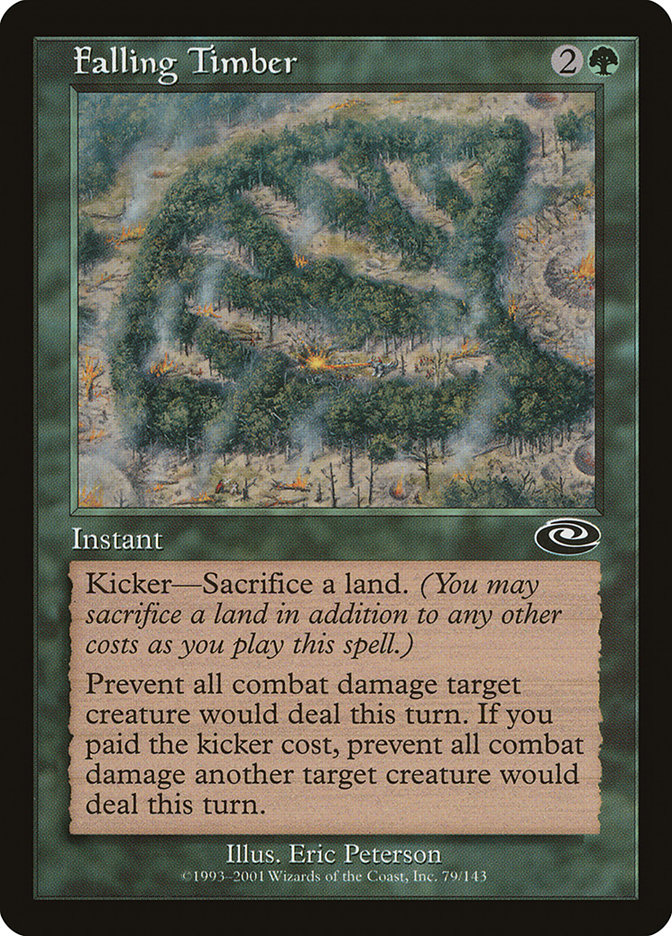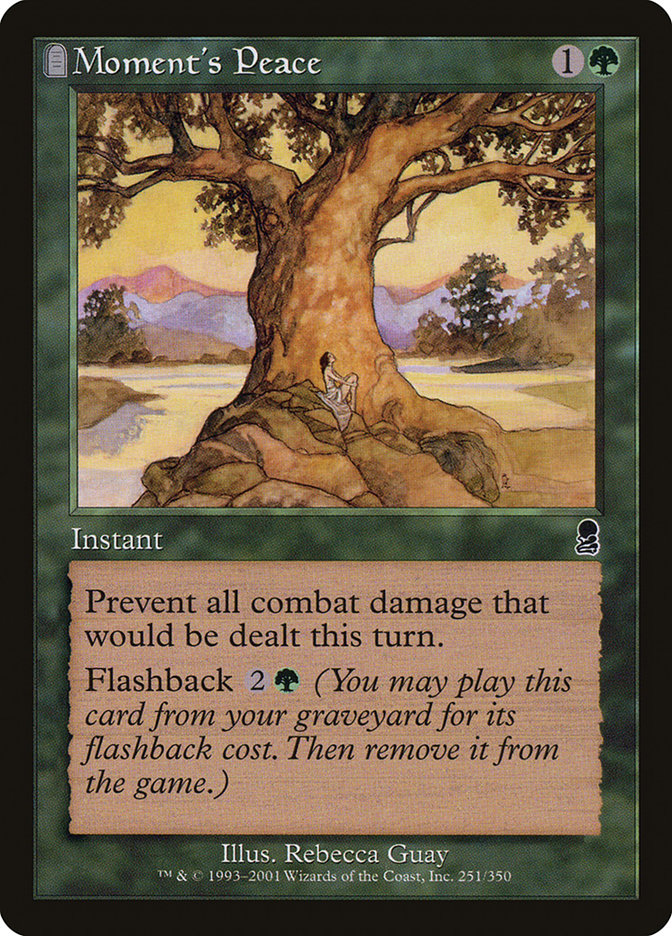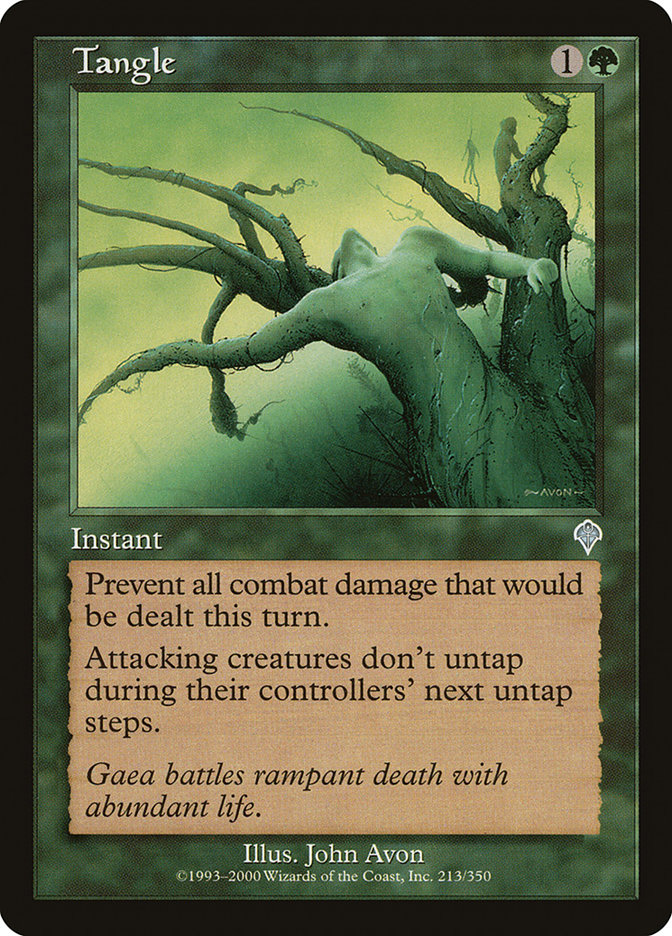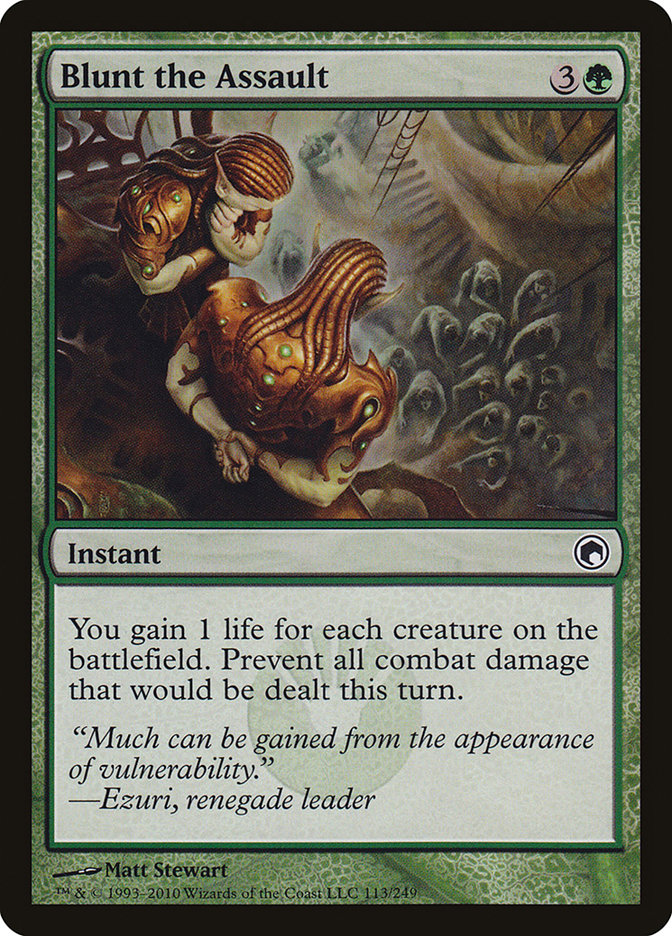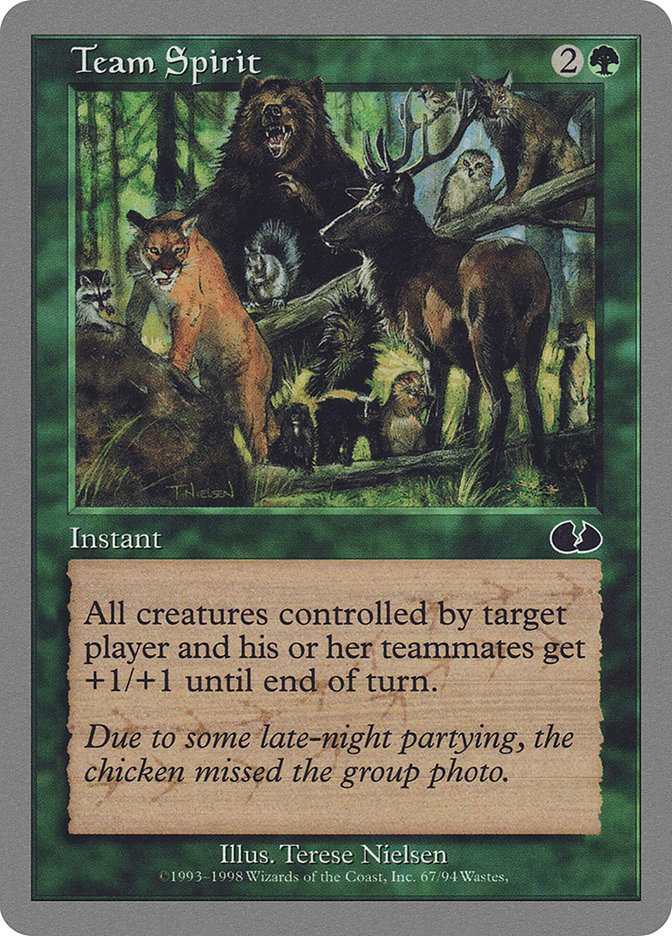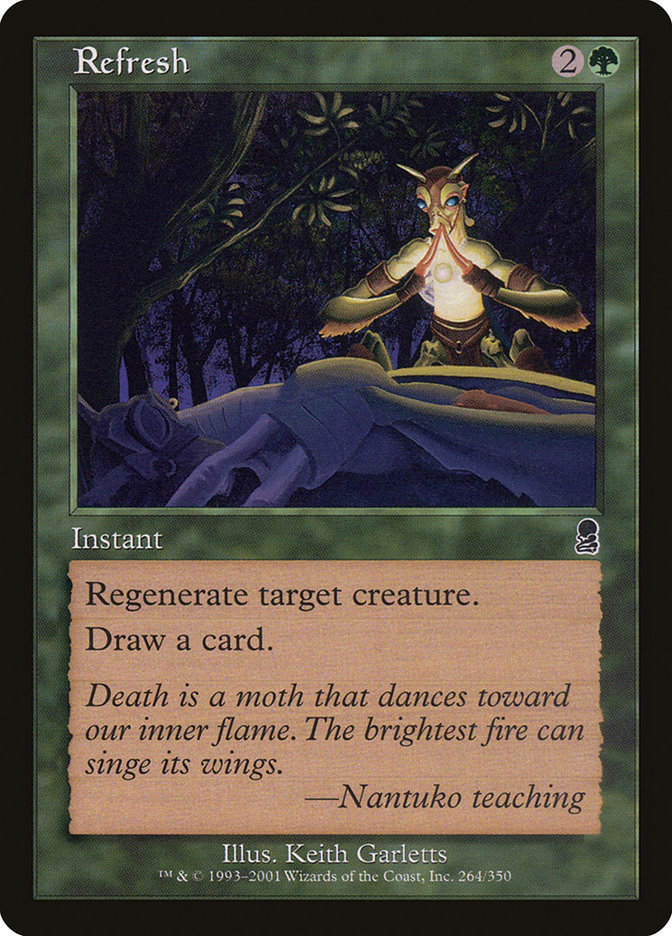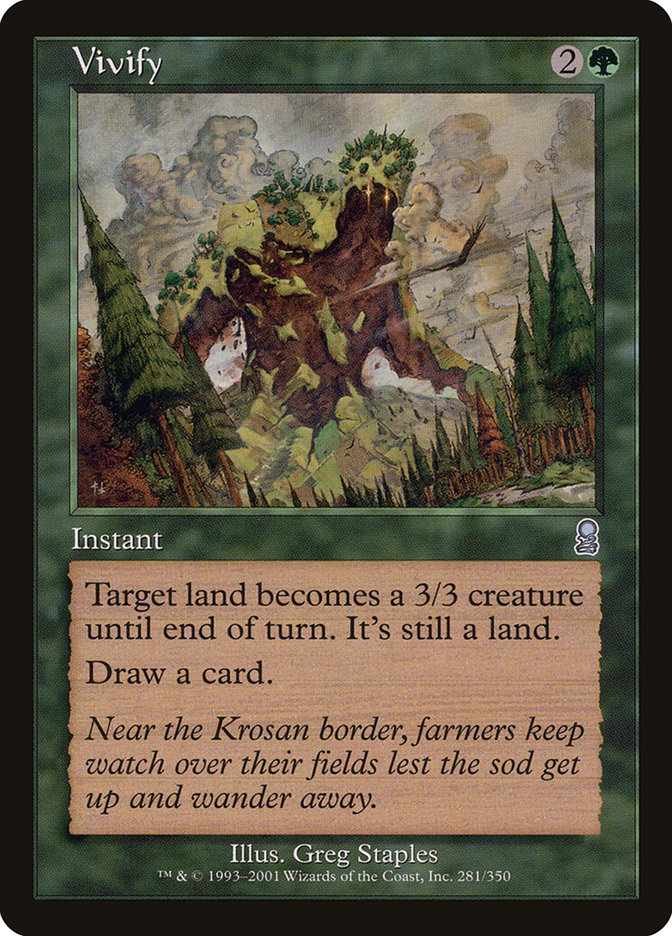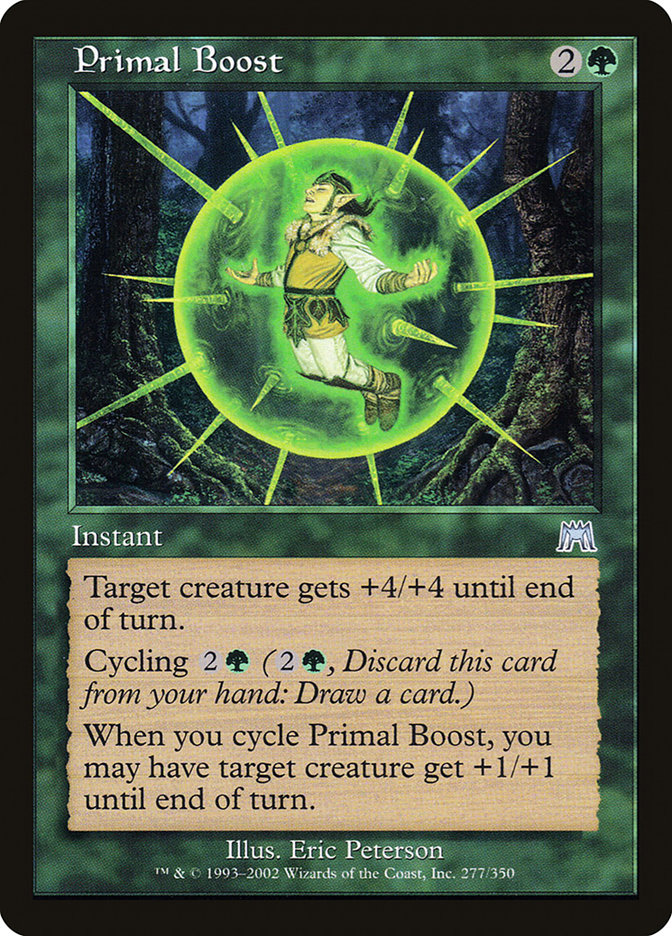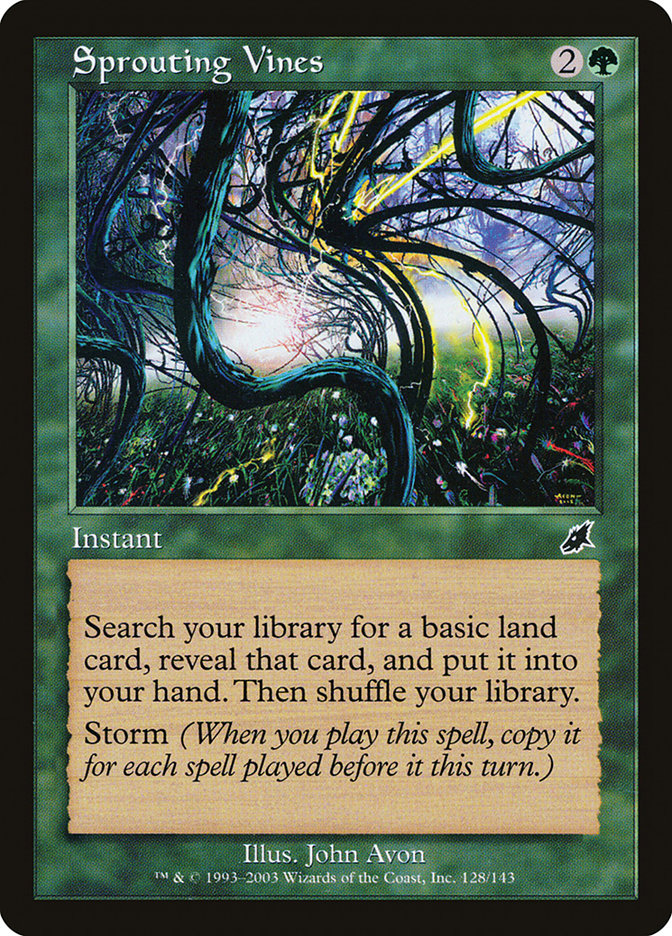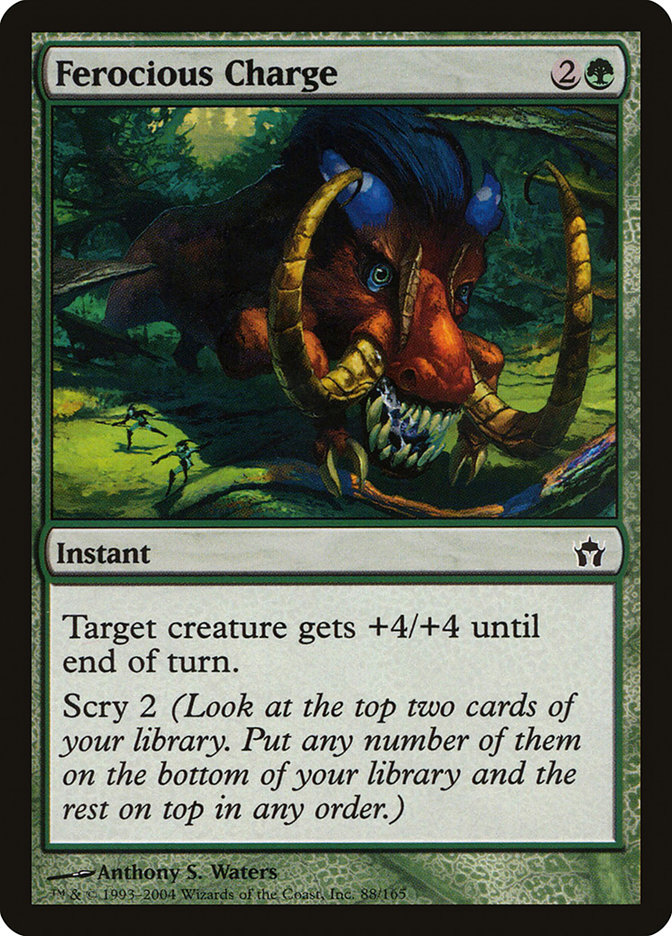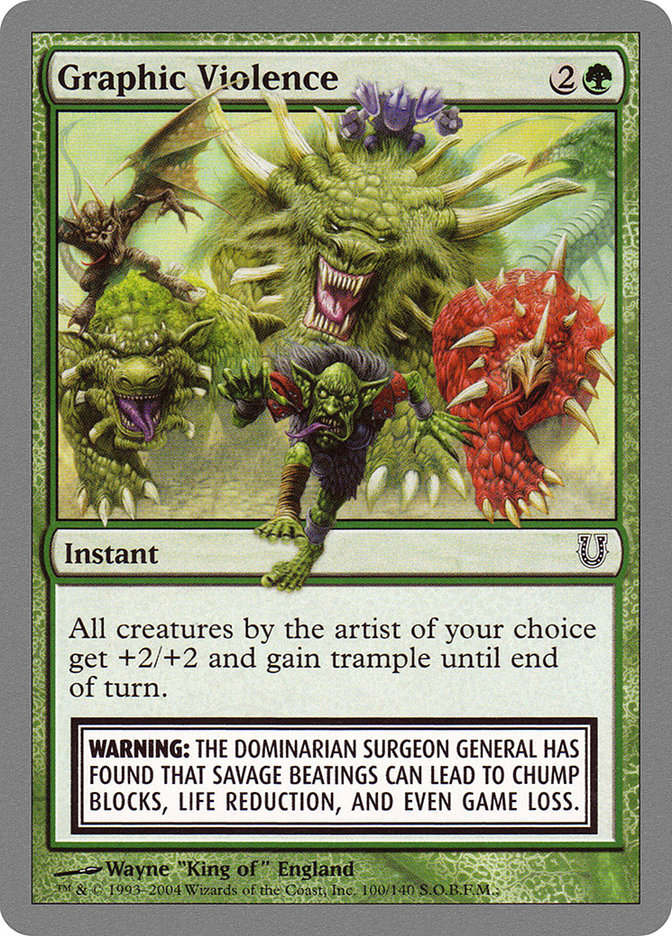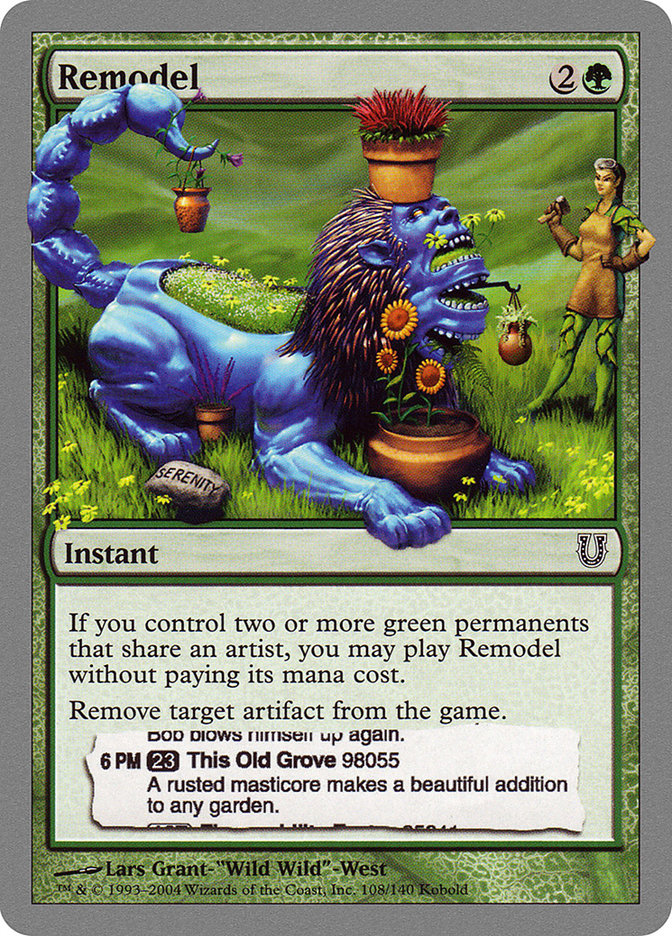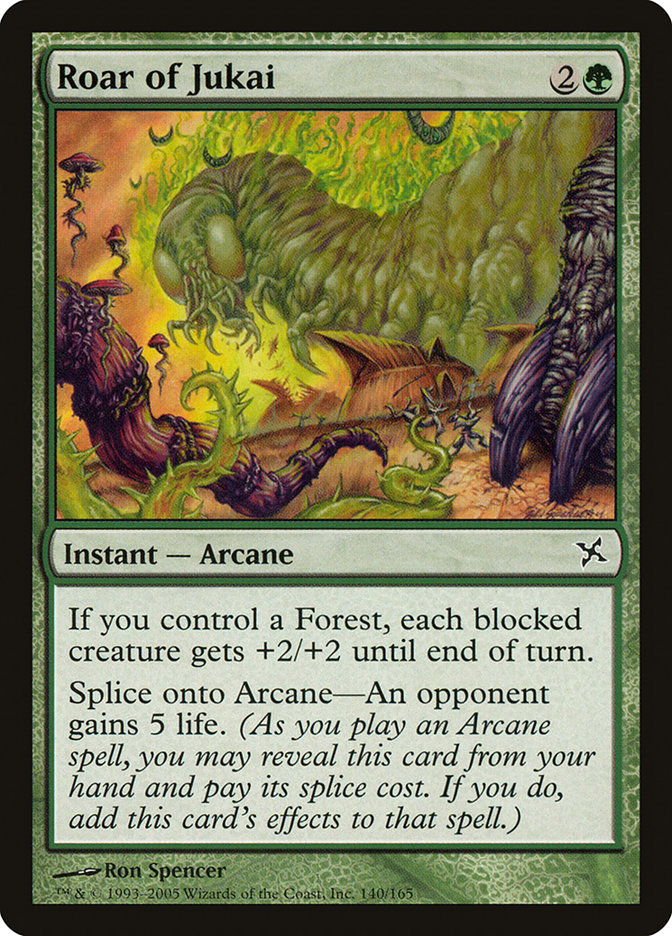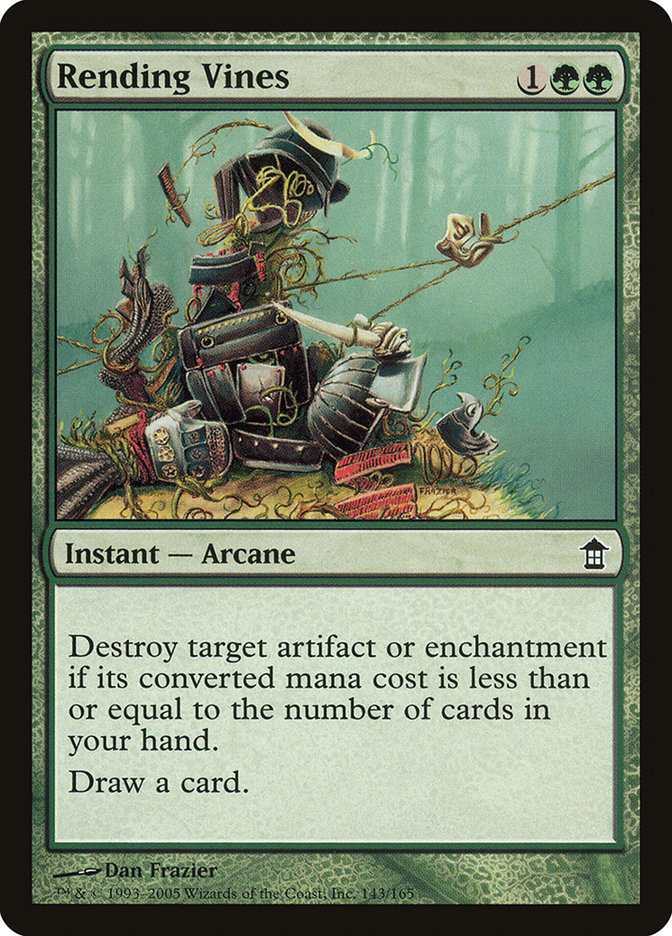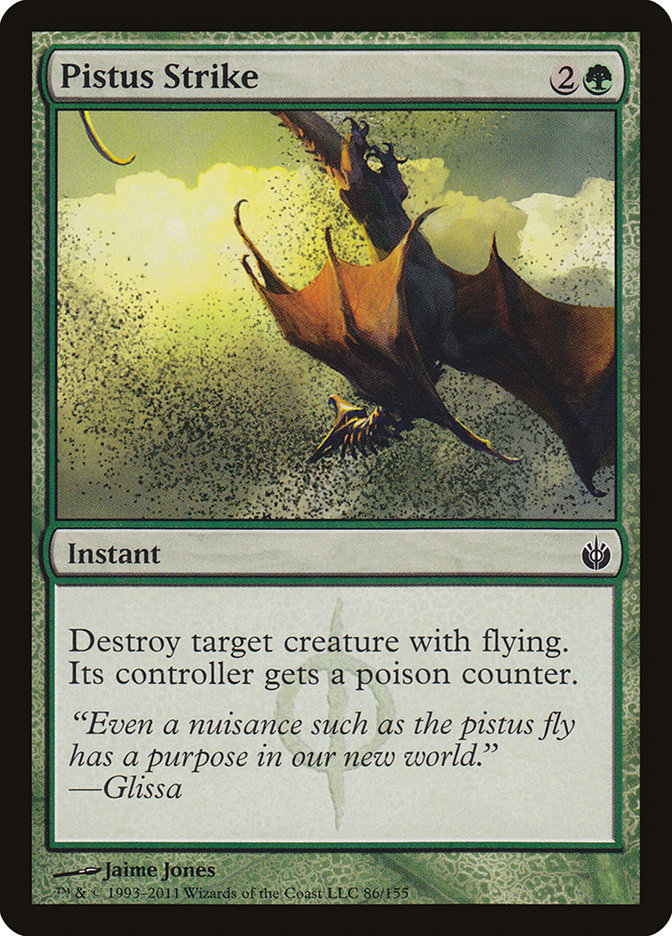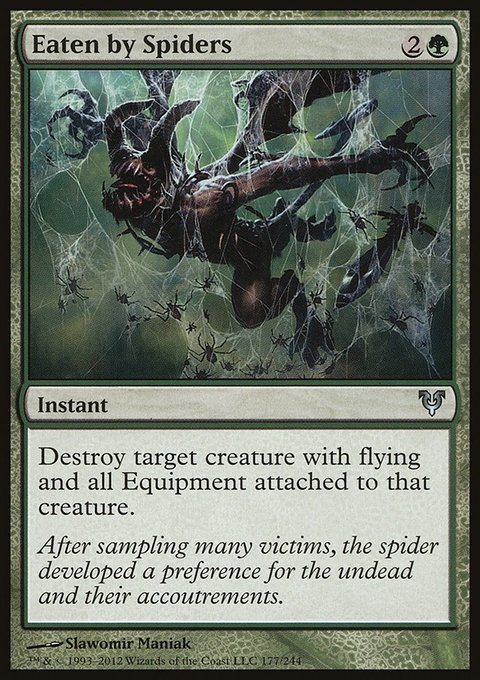Falling Timber MTG Card
| Mana cost | |
| Converted mana cost | 3 |
| Rarity | Common |
| Type | Instant |
| Abilities | Kicker |
| Released | 2001-02-05 |
| Set symbol | |
| Set name | Planeshift |
| Set code | PLS |
| Number | 79 |
| Frame | 1997 |
| Layout | Normal |
| Border | Black |
| Illustred by | Eric Peterson |
Text of card
Kicker— Sacrifice a land. (You may sacrifice a land in addition to any other costs as you play this spell.) Prevent all combat damage target creature would deal this turn. If you paid the kicker cost, prevent all combat damage another target creature would deal this turn.
Cards like Falling Timber
Falling Timber introduces unique dynamics to creature protection it in Magic: The Gathering. It has a close relationship with cards like Moment’s Peace, which also serves to prevent damage from combat by rendering creatures effectively untouchable for a turn. While Moment’s Peace has a flashback ability, allowing it to be used from the graveyard, Falling Timber differs by requiring you to tap an untapped creature you control for the same effect. This taps into the strategy of using creatures’ statuses to your advantage, beyond the battlefield.
Then we have Tangle, which serves a similar purpose but with a twist – it keeps attacking creatures tapped for an additional turn. This extra control can be pivotal in setting the pace of the game, albeit at a higher mana cost. Falling Timber, while not affecting enemies on the subsequent turn, offers instant speed intervention at a potentially lower cost, depending on the creatures you have available.
Cards like Blunt the Assault share the same sphere by preventing damage, but again, with a notable twist: it provides life gain based on the number of attacking creatures. Falling Timber doesn’t have this feature, focusing solely on the protective aspect at crucial moments.
In essence, Falling Timber carves its niche in the compendium of Magic: The Gathering cards, offering a tactical shield that can be as strong as the creatures at your disposal, epitomizing versatility in defense.
Cards similar to Falling Timber by color, type and mana cost
Card Pros
Card Advantage: Falling Timber not only helps you control the board by forestalling an opponent’s attack, but it can also provide card advantage if cycled, refreshing your hand and keeping your options open.
Resource Acceleration: Utilizing its cycling ability accelerates your resources, allowing you to effectively replace the card and dig deeper into your deck for essential pieces of your strategy. This can be pivotal in reaching your key spells sooner.
Instant Speed: The flexibility of casting Falling Timber at instant speed offers strategic depth to gameplay. It lets you adapt to the battlefield dynamically, whether that’s interrupting combat or optimizing your mana usage during the end phase of your opponent’s turn.
Card Cons
Discard Requirement: When playing Falling Timber, you’ll find that having to discard a card is part of its casting cost. This can be quite punitive if you’re already dealing with a hand that’s not offering much flexibility. Managing your resources effectively is crucial in MTG, and discarding might not align with your strategy, especially if every card in your hand is essential for your game plan.
Specific Mana Cost: Falling Timber comes with a mana cost that requires specific color allocation, which means it will fit primarily into green-centric decks. Players with multicolor decks that aren’t heavily green may struggle to meet the casting requirements efficiently or may find the card competes unfavorably with other color commitments in their deck construction.
Comparatively High Mana Cost: The cost to bring Falling Timber into play may also be seen as a drawback. With other spells and creatures that can be cast for less mana and potentially have a quicker impact on the game, it’s important to consider whether the cost aligns with the expected benefits. In fast-paced matches, the mana you invest in this card could perhaps be used more effectively elsewhere.
Reasons to Include in Your Collection
Versatility: Falling Timber offers an adaptable solution as it can be a key piece in green decks aiming to manage the board. Its ability to disrupt an opponent’s development by tapping their lands can be tactically pivotal, fitting seamlessly into both aggressive and control-oriented green decks.
Combo Potential: This card shines in combinations with mechanics that capitalize on creatures being tapped or untapped. It can synergize with cards that trigger effects when new forests come into play, bolstering both mana acceleration and strategic creature control.
Meta-Relevance: In a game state where fast mana development and creature superiority are crucial, Falling Timber can tilt the scales in your favor. The ability to stall opponents during critical turns can disrupt their tempo, establishing Falling Timber as a relevant tool in diverse matchups and metagames.
How to beat
Falling Timber presents a unique challenge in Magic: The Gathering, with its ability to prevent creatures from attacking for a turn. This delay tactic can be a real game-changer in buying necessary time for someone to stabilize their board or prepare for a later surge. However, it’s not without its weaknesses.
To effectively counteract Falling Timber, consider running instant-speed removal to deal with creatures that your opponent might try to protect. Cards like Fatal Push or Path to Exile allow you to eliminate key targets even in the face of disruption. Additionally, using counterspells like Mana Leak can stop Falling Timber before it takes an effect. Creatures with hexproof or shroud are also excellent as they are immune to targeted spells.
Finally, having a robust card draw engine can help cycle through your deck to access these answers more quickly. By keeping pressure on opponents and maintaining a hand ready to respond, you can diminish the impact of Falling Timber and keep the game in your favor, adapting and thriving despite any temporary setbacks.
Where to buy
If you're looking to purchase Falling Timber MTG card by a specific set like Planeshift, there are several reliable options to consider. One of the primary sources is your local game store, where you can often find booster packs, individual cards, and preconstructed decks from current and some past sets. They often offer the added benefit of a community where you can trade with other players.
For a broader inventory, particularly of older sets, online marketplaces like TCGPlayer, Card Kingdom and Card Market offer extensive selections and allow you to search for cards from specific sets. Larger e-commerce platforms like eBay and Amazon also have listings from various sellers, which can be a good place to look for sealed product and rare finds.
Additionally, Magic’s official site often has a store locator and retailer lists for finding Wizards of the Coast licensed products. Remember to check for authenticity and the condition of the cards when purchasing, especially from individual sellers on larger marketplaces.
Below is a list of some store websites where you can buy the Falling Timber and other MTG cards:
 BUY NOW
BUY NOW BurnMana is an official partner of TCGPlayer
- eBay
- Card Kingdom
- Card Market
- Star City Games
- CoolStuffInc
- MTG Mint Card
- Hareruya
- Troll and Toad
- ABU Games
- Card Hoarder Magic Online
- MTGO Traders Magic Online
See MTG Products
Legalities
Magic the Gathering formats where Falling Timber has restrictions
| Format | Legality |
|---|---|
| Commander | Legal |
| Legacy | Legal |
| Paupercommander | Legal |
| Oathbreaker | Legal |
| Pauper | Legal |
| Premodern | Legal |
| Vintage | Legal |
| Duel | Legal |
| Predh | Legal |
Rules and information
The reference guide for Magic: The Gathering Falling Timber card rulings provides official rulings, any errata issued, as well as a record of all the functional modifications that have occurred.
| Date | Text |
|---|---|
| 2004-10-04 | You pick a second target only if you choose to kick Falling Timber. |
